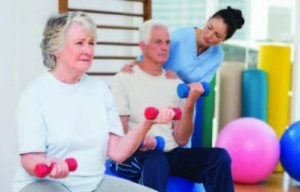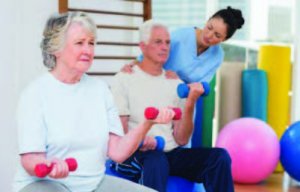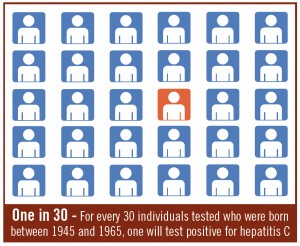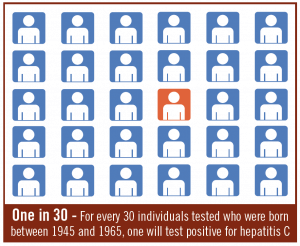The Healthy Aging Brain…a Continuing Series

While exercise has an undisputed key role in maintaining brain health throughout our lives, promising new research points to a number of other factors that can spell the difference between thriving or just surviving the senior years. We checked in with Eric Terman, MD, personal physician and Assistant Professor of Internal Medicine and Geriatrics at Northwestern University for an informed view of the latest thinking on this topic…important not just for current seniors, but also for aging Baby Boomers and for younger 40-somethings just beginning the “aging” process.
What are some of the key findings of current studies into how the mind ages?
Research shows that the brain continues to form new connections throughout life. This process, called adult neurogenesis, shows how plastic or structurally adaptable the brain is, even as we age. A combination of exercise, diet and stimulating environments can increase adult neurogenesis and improve cognitive functioning in young and old individuals. This has been documented in animals and we are seeing increasing evidence this occurs with humans too.
What role does exercise play?
We know exercise appears to increase the neurogenerative properties. While the cause is not clearly proven yet, there is little doubt that exercise benefits both body and mind in many ways. It is associated with reduced risk of dementia, and may actually be preventive. For these reasons, I almost always recommend a form of regular activity to my patients.
Do you advise your older patients to consider retirement for reduced stress, more time for leisure activities, etc?
It’s critical to stay engaged in something you care about, whether or not you’re earning a significant salary. The brain stays sharp if you continually grapple with problems, find solutions and achieve positive outcomes.
Wouldn’t lifelong learning classes and lectures fill that void?
Sometimes listening to a lecturer can be barely better than watching TV in terms of passive versus active involvement of your brain. Unless you’re reading textbooks and writing papers, you’re better off with the type of engagement you receive from working. It’s the same reason the benefits of brain training games are unclear – problem solving for real world issues results in better cognitive capacity.
Can you explain mindfulness-based interventions and how these work to reduce the severity or risk of diseases such as Parkinson’s and Alzheimer’s?
High levels of stress are associated with increased risk of these diseases, and with mild cognitive impairment. Mindfulness-based interventions such as meditation and yoga are non-invasive stress reducers, and proven effective complements to treatments for anxiety, hypertension, chronic pain and insomnia too. Preliminary research is also showing that mindfulness-based interventions reduce atrophy of the hippocampus (a critical site of episodic memory), increase gray matter and improve functional connectivity in the neural networks of the brain most affected by the disease process of Parkinson’s and Alzheimer’s.
What is the best way to get started with this kind of program?
There are formal meditation programs and yoga training activities, as well as some excellent apps that take you through the process, such as Headspace.
What advice would you give seniors looking for ways to keep their brain and spirit vigorous as they age?
Find something to pursue that keeps you actively engaged and that you love to do if you formally stop working. Definitely, keep moving – I have patients who have started exercise programs in their 70s and they see significant differences in the way they feel. Modify your sleep behaviors if needed to ensure a good refreshing sleep, every night. And while the effect of a strong social network may be somewhat of a chicken-egg conundrum, there is increasing evidence that social and mental stimulation strengthen connections between nerve cells in the brain.
Breakthrough research sheds new light on Alzheimer’s disease
Numerous studies of Alzheimer’s disease, the leading cause of dementia that gradually erodes a person’s memory, thinking and ability to perform everyday tasks, are beginning to provide answers as to causes and possible targets for treatment. For instance, the link with cardiovascular disease has become increasingly evident. Several conditions known to raise the risk of cardiovascular disease, including high blood pressure, diabetes and high cholesterol, also increase the risk of developing Alzheimer’s – as many as 80 percent of individuals with Alzheimer’s disease also have cardiovascular disease, according to the Alzheimer’s Association. Experts have noted that while some people develop brain plaques and tangles seen in the disease, they do not suffer from the symptoms of Alzheimer’s unless vascular disease is also present.
Other new research is focused on the blood-brain barrier (BBB), a protective filter of the brain that becomes more damaged in patients with Alzheimer’s disease. At University of Southern California, neuroscientist Berislav Zlokovic and team found that the BBB becomes leaky with age, starting in the hippocampus, an area that is affected before the symptoms of Alzheimer’s disease are seen. He noted that specialized brain scans might help doctors diagnose the condition earlier. “Dr. Zlokovic’s advances bring us that much closer to a cure,” reports the chairman of the Cure Alzheimer’s Fund.
The post The Healthy Aging Brain…a Continuing Series appeared first on Specialdocs Consultants.







